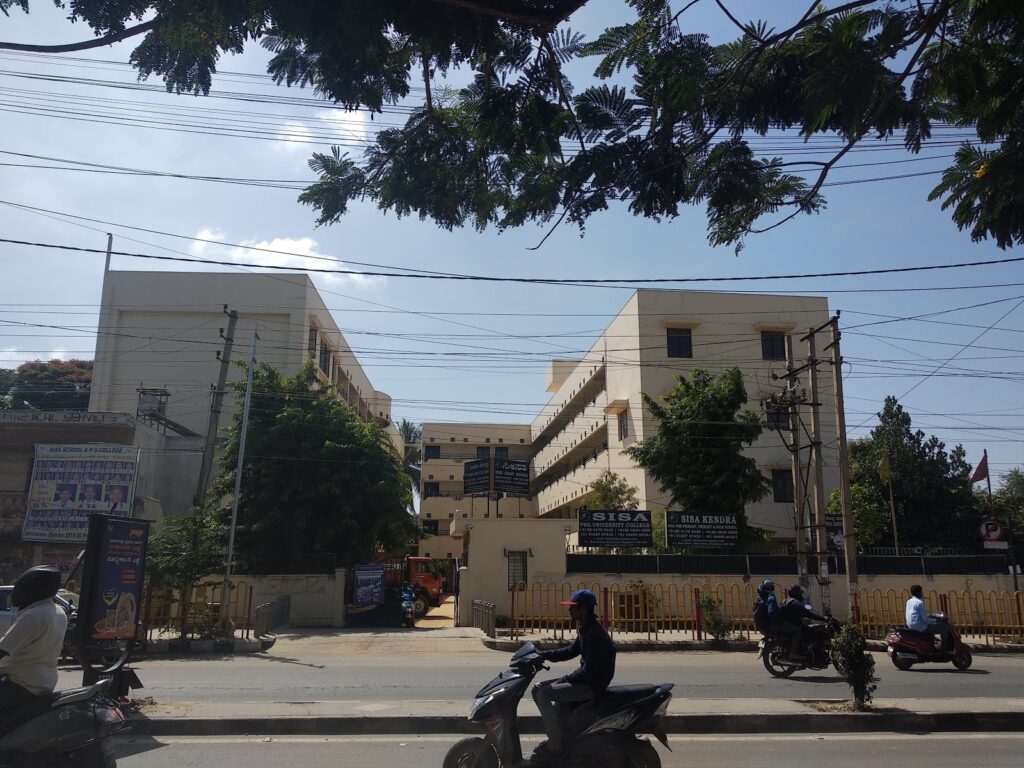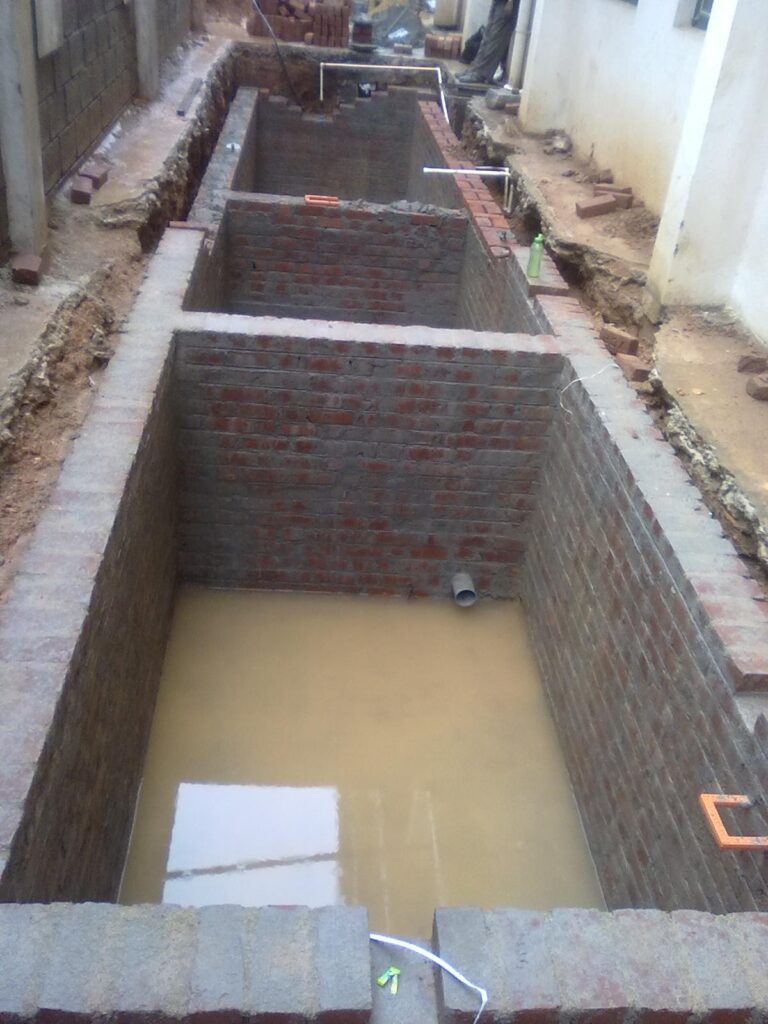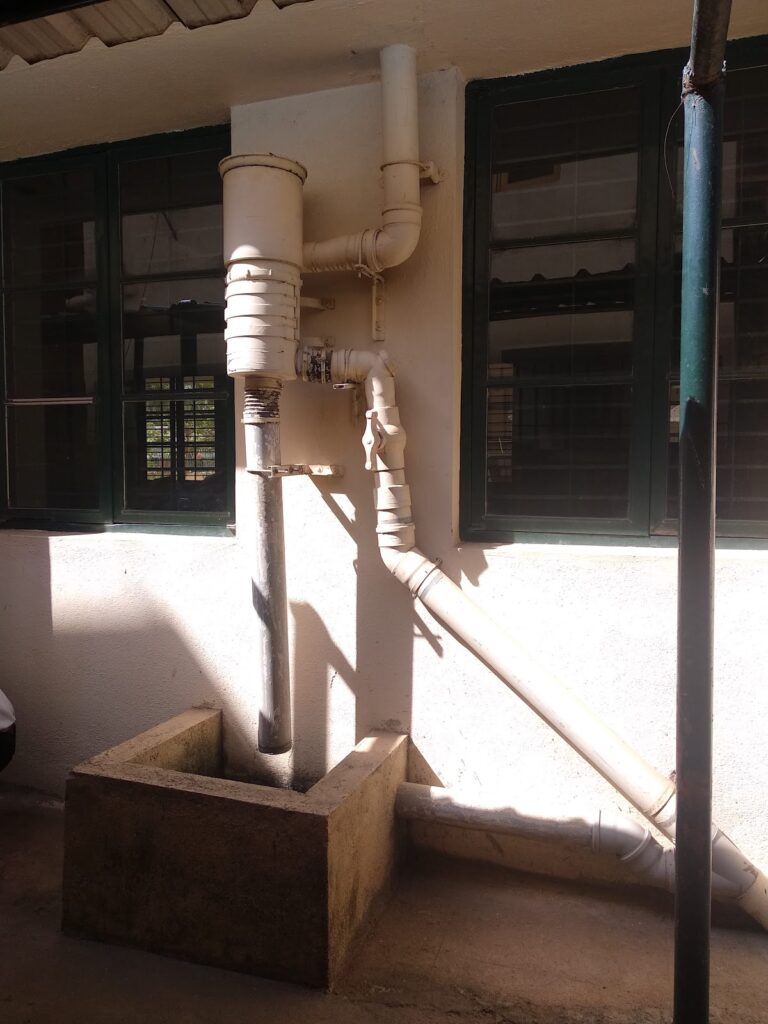SISA Indo-Swiss Academy - RWH case study
Situated in Whitefield, Bengaluru, SISA Indo-Swiss Academy is a private school founded in 1981 and recognized by the Govt. of Karnataka. It has pre-primary, primary and high schools, with about 630+ children and 50+ staff. Everyday around 700 people visit the campus. There are two main buildings in the school – Beverin and Pascumin. The school premises are over 4 decades old and have been gradually improved.


Water situation in Whitefield
Whitefield, located towards the south-east of the city has emerged as the heart of Bengaluru’s IT corridor and has seen rapid development over the last decade. Cauvery water pipeline work for these areas only began as late as 2017, and the suburban population here depends mainly on borewell water. In some areas, the water level that used to be around 300 – 500 ft, has fallen to 1700 ft. In many places the borewells have dried up.
Water situation in SISA Kendra
With no access to municipal water supply, SISA Kendra School opted for a borewell that was drilled around 1992 to a depth of 300ft. It used to supply water to all the bathrooms, toilets and for landscape needs, but ran dry in 2009. The school then had to depend on tankers throughout the year. Additionally, drinking water cans were bought (120 litres) every day. It is in this context that Biome’s help was sought in 2012, to be able to augment the water supply.
Challenge
1. The average daily domestic demand (for all purposes other than drinking) was 5000 L in 2012. This worked out to a per capita daily demand of about 8 litres, which was judicious use of water. The current per capita daily demand has now gone up to 10 litres.
2. Hefty amounts were being paid to ensure supply of water through tankers, and this source is also quite unpredictable.
Rainwater harvesting potential
The two school buildings have a total rooftop area of 9500 sft (5000 + 4500 sft). For Bengaluru’s annual rainfall of 970 mm, the potential harvestable rooftop rainwater is 401 + 361 = 762 KL (assuming 90% of this water could be harvested and stored). This would meet around 108-109 days of the water demand of the school.
Biome’s proposal of a RWH system
After a careful study of the school premises and needs, Biome proposed harvesting rainwater for both storage and groundwater recharge. This was divided into two phases, the first consisting of building a large new rainwater sump of 30 KL, the overflow from which was directed to the dry borewell; and the second consisting of using the overflow from the septic tank for gardening.
The first phase was implemented by the school in 2012. The water collected in the sumps was pumped up to overhead tanks on the terrace, whose output was metered, so the volume of water used was recorded. At that time, the harvested rainwater was able to meet 55% of their water needs, saving them about Rs 76000/- annually. Over the years, as the student intake increased, the demand percentage that the RWH system is able to meet has decreased to around 45%.
SISA INDO-SWISS Academy - RWH case study
Situated in Whitefield, Bengaluru, SISA Indo-Swiss Academy is a private school founded in 1981 and recognized by the Govt. of Karnataka. It has pre-primary, primary and high schools, with about 630+ children and 50+ staff. Everyday around 700 people visit the campus. There are two main buildings in the school – Beverin and Pascumin. The school premises are over 4 decades old and have been gradually improved.


Water situation in Whitefield
Whitefield, located towards the south-east of the city has emerged as the heart of Bengaluru’s IT corridor and has seen rapid development over the last decade. Cauvery water pipeline work for these areas only began as late as 2017, and the suburban population here depends mainly on borewell water. In some areas, the water level that used to be around 300 – 500 ft, has fallen to 1700 ft. In many places the borewells have dried up.
Water situation in SISA Kendra
With no access to municipal water supply, SISA Kendra School opted for a borewell that was drilled around 1992 to a depth of 300ft. It used to supply water to all the bathrooms, toilets and for landscape needs, but ran dry in 2009. The school then had to depend on tankers throughout the year. Additionally, drinking water cans were bought (120 litres) every day. It is in this context that Biome’s help was sought in 2012, to be able to augment the water supply.
Challenge
1. The average daily domestic demand (for all purposes other than drinking) was 5000 L in 2012. This worked out to a per capita daily demand of about 8 litres, which was judicious use of water. The current per capita daily demand has now gone up to 10 litres.
2. Hefty amounts were being paid to ensure supply of water through tankers, and this source is also quite unpredictable.
Rainwater harvesting potential
The two school buildings have a total rooftop area of 9500 sft (5000 + 4500 sft). For Bengaluru’s annual rainfall of 970 mm, the potential harvestable rooftop rainwater is 401 + 361 = 762 KL (assuming 90% of this water could be harvested and stored). This would meet around 108-109 days of the water demand of the school.
Biome’s proposal of a RWH system
After a careful study of the school premises and needs, Biome proposed harvesting rainwater for both storage and groundwater recharge. This was divided into two phases, the first consisting of building a large new rainwater sump of 30 KL, the overflow from which was directed to the dry borewell; and the second consisting of using the overflow from the septic tank for gardening.
The first phase was implemented by the school in 2012. The water collected in the sumps was pumped up to overhead tanks on the terrace, whose output was metered, so the volume of water used was recorded. At that time, the harvested rainwater was able to meet 55% of their water needs, saving them about Rs 76000/- annually. Over the years, as the student intake increased, the demand percentage that the RWH system is able to meet has decreased to around 45%.


The school maintenance staff who look after the RWH system, are also careful to collect the water from the First Rain Separator (FRS) and use it for landscaping needs.
“It was my dream project to get the rainwater harvesting system for the school and ensure that we are less dependent on borewell and municipal water supply. While maintenance is the main task, the RWH system has helped us be 50% sufficient so far”, says Mr Suriya Narayana, Manager, SISA Indo-Swiss Academy, Whitefield.


The school maintenance staff who look after the RWH system, are also careful to collect the water from the First Rain Separator (FRS) and use it for landscaping needs.
“It was my dream project to get the rainwater harvesting system for the school and ensure that we are less dependent on borewell and municipal water supply. While maintenance is the main task, the RWH system has helped us be 50% sufficient so far”, says Mr Suriya Narayana, Manager, SISA Indo-Swiss Academy, Whitefield.
